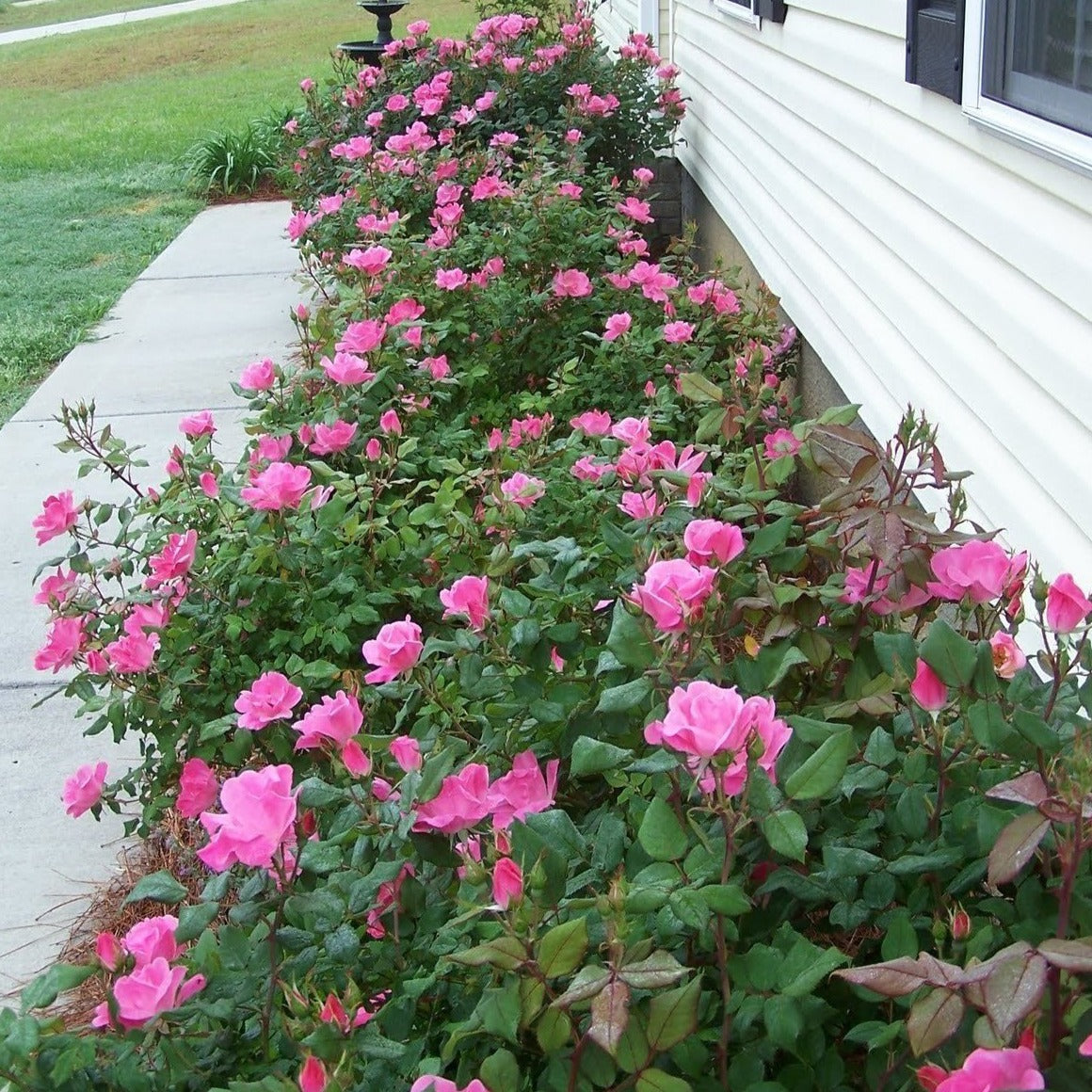
In the mid-1800s a multiflora rose from Asia with small white flowers was introduced to the US as a fantastic solution to soil erosion, and a “living fence” to control livestock. The Dog rose climbs over hedges, has five petals, mean thorns and, again, no scent. The grandpappy of the Knockout rose comes from Europe. Because it is hybridized, the Knock Out rose isn’t particularly laden with pollen and, remember, it doesn’t have any scent. Nothing, if you don’t care that it has vicious thorns, no scent, isn’t particularly pretty and is as common as the Stella d’Oro day lily – which is most likely planted nearby in the supermarket parking lot.Īnother thing? Not even bees like it. Introduced (and patented) in 2000 by a Wisconsin rose breeder, the Knock Out rose is marketed as a beginners’ rose bush that doesn’t grow too big, doesn’t need dead heading, is tolerant of harsh conditions and doesn’t need fancy pruning. Who does he think you are, the highway department? Infected plants die within a few years and should be removed as soon as possible after diagnosis to prevent infecting other roses.The Knock Out Rose can be found in parking lots, along highway median strips and is highly regarded as a “landscape plant.” That’s another way of saying “seen at a distance.” Do not listen to the guy at the nursery who leads you over to the tubs of Knock Out roses and tries to sell you one. Symptoms are characterized by abnormal growth, including a "witch's broom" shape in new shoots, distorted or deformed leaves and flower buds, spiral-shaped cane growth and excessive, pliable thorns. Rose rosette virus can appear in your landscape if you accidentally purchase infected plants, or if nearby wild roses, including multiflora roses ( Rosa multiflora, USDA zones 5 through 8), become infected. They are so small that wind carries them from plant to plant. It is spread primarily by eriophyid mites, which are invisible to the naked eye. Probably the most destructive disease in roses, rose rosette virus spreads rapidly even among disease-resistant Knock Out roses. If you notice symptoms of stem canker, remove the affected canes by making a clean cut several inches below each diseased area. The best way to prevent it is to avoid injuring roses' canes and to control insects, black spot and powdery mildew to maintain the plants' health. This disease cannot be treated by a fungicide. The stems can turn any color from light brown to a dark, almost black, purplish brown. Spray enough to cover leaves, flowers and stems completely every 10 days.Ĭaused by several fungi, including Botryosphaeria, Coniothyrium, Cryptosporella and Leptosphaeria, stem cankers cause dead or discolored areas on rose canes.

Many chemical fungicides available to treat rose diseases.

It also leads to depressed areas on stems, blotches on flowers and wilting flower buds. Botrytis blight is caused by Botrytis cinerea fungi, which results in hairy grayish brown growths on flower buds and flowers.

The disease is caused by Phragmidium fungi. Rust symptoms include orange areas on leaves and stems and sometimes an orange dust. The symptoms of rust and botrytis blight look very different, but both diseases are caused by a fungus that thrives in stagnant, moist air. In severe cases, use a fungicide rated for controlling the specific disease. It looks like white, fuzzy growth on leaves, buds and stems.īecause Knock Out roses are resistant to black spot and powdery mildew, they often recover from them when their diseased leaves and branches are removed and they aren't watered from above. It is most problematic during mild weather with high humidity at night and in shaded locations. rosae fungus_,_ is another common disease that rarely affects Knock Out roses. Powdery mildew, caused by the Sphaerotheca pannosa var.

are considered to have excellent disease resistance, but, like other roses, they can suffer from illnesses.


 0 kommentar(er)
0 kommentar(er)
